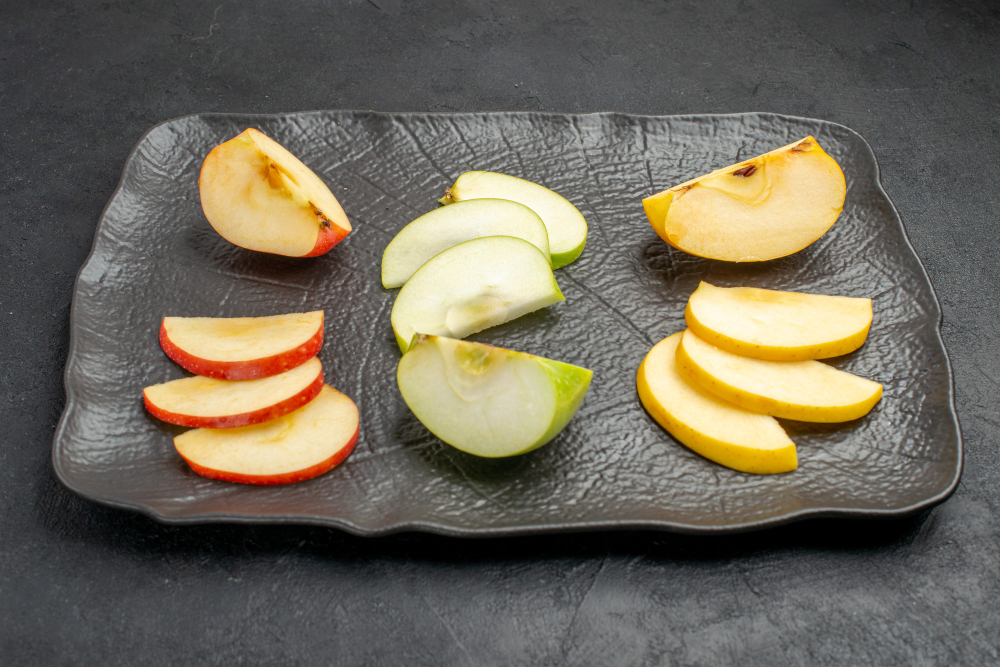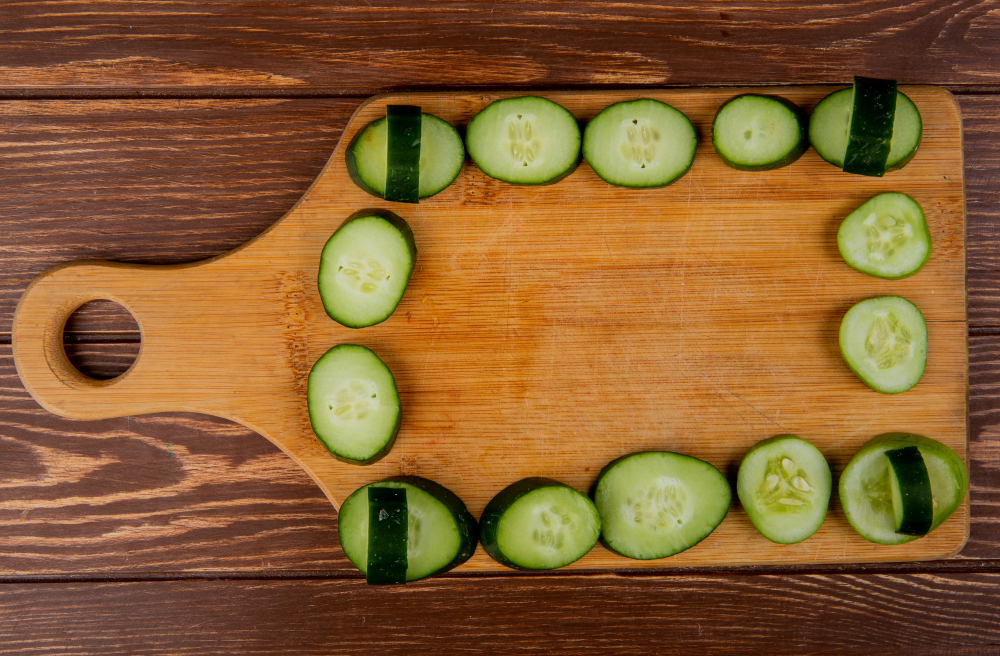WELLHEALTHORGANIC.COM EAT YOUR PEELS UNLOCKING THE NUTRITIONAL BENEFITS

Table of Contents
Introduction
In a world where sustainable living and health consciousness are becoming increasingly important, we often overlook the nutritional powerhouse that lies in the peels of fruits and vegetables. While many of us habitually discard these outer layers, they actually hold a treasure trove of nutrients that can significantly benefit our health. This comprehensive guide delves into the concept of eating peels, exploring the various nutritional benefits, practical ways to incorporate them into our diets, and the positive impact this simple practice can have on our overall well-being and the environment.
The Nutritional Power of Peels
Understanding the Nutritional Profile
Fruit and vegetable peels are often richer in certain nutrients compared to their flesh. They are packed with vitamins, minerals, and fiber that contribute to our daily nutritional needs.
Vitamins Found in Peels
Peels are particularly high in vitamins such as vitamin C, vitamin A, and several B vitamins. For instance, apple peels are known to contain a significant amount of vitamin C, which is essential for immune function and skin health.
Mineral Content
Minerals like potassium, magnesium, and calcium are also abundant in many peels. Potato peels, for example, are an excellent source of potassium, which is crucial for maintaining healthy blood pressure levels.
Fiber Benefits
Dietary fiber is another key component found in peels. Fiber aids in digestion, helps maintain bowel health, and can contribute to lowering cholesterol levels. The fiber content in peels like those of apples and potatoes can enhance digestive health and promote regularity.
Comparing Peel Nutrition to Flesh
Differences in Nutrient Density
The nutrient density of peels often surpasses that of the flesh. For example, an apple’s peel contains more antioxidants and fiber compared to its flesh. This makes eating the whole fruit, including the peel, more beneficial.
Specific Fruits and Vegetables Where Peels Are More Nutritious
Certain fruits and vegetables stand out in terms of peel nutrition. For instance, the peels of citrus fruits contain high levels of flavonoids, which have anti-inflammatory and antioxidant properties. Similarly, cucumber peels are rich in vitamin K and fiber.
Case Studies and Research Findings
Numerous studies highlight the benefits of consuming peels. Research has shown that the polyphenols in apple peels can help reduce the risk of chronic diseases. Another study on potato peels revealed that they contain compounds that may help lower blood pressure and improve heart health.
Common Fruit and Vegetable Peels You Should Eat
Apple Peels

Nutritional Benefits of Apple Peels
Apple peels are loaded with fiber, vitamins, and antioxidants. They contain quercetin, a flavonoid that has anti-inflammatory and anti-cancer properties. The fiber in apple peels aids digestion and helps in maintaining a healthy weight.
Potential Health Benefits
Consuming apple peels can improve heart health by reducing cholesterol levels. The antioxidants present in the peel can protect cells from damage, thereby reducing the risk of chronic diseases.
Potato Peels
The Surprising Nutrition in Potato Peels
Potato peels are often discarded, yet they are rich in nutrients such as fiber, iron, and potassium. They also contain significant amounts of vitamin C and B vitamins.
How to Prepare Potato Peels Safely
To safely consume potato peels, it’s important to wash them thoroughly to remove any dirt and pesticide residues. Baking or roasting them can enhance their flavor and make them a delicious, crispy snack.
Citrus Peels
Benefits of Eating Citrus Peels
Citrus peels, including those of oranges, lemons, and limes, are rich in vitamin C, fiber, and various phytochemicals. They have been shown to have antimicrobial and anti-inflammatory properties.
Creative Ways to Consume Citrus Peels
Citrus peels can be used in a variety of ways. They can be zested and added to baked goods, salads, and beverages. Candied citrus peels make a tasty treat, while dried peels can be used to infuse flavors in teas and marinades.
Carrot Peels
Nutrient Content in Carrot Peels
Carrot peels are rich in beta-carotene, fiber, and vitamin K. Beta-carotene is a precursor to vitamin A, which is essential for good vision and immune function.
Easy Recipes Incorporating Carrot Peels
Carrot peels can be added to soups, stews, and smoothies. They can also be baked into chips or used to add texture and nutrients to salads.
Cucumber Peels

Why Cucumber Peels Are Beneficial
Cucumber peels contain fiber, vitamin K, and antioxidants. They are low in calories but high in nutrients, making them an excellent addition to a healthy diet.
Tips for Adding Cucumber Peels to Your Diet
Cucumber peels can be left on when slicing cucumbers for salads. They can also be blended into smoothies or used as a crunchy topping for various dishes.
Health Benefits of Eating Peels
Boosting Digestive Health
Role of Fiber in Peels
The fiber in peels helps to maintain digestive health by promoting regular bowel movements and preventing constipation. It also acts as a prebiotic, supporting the growth of beneficial gut bacteria.
How Peels Aid Digestion
Consuming peels can help regulate the digestive system, reduce the risk of digestive disorders, and improve nutrient absorption. The high fiber content in peels slows down digestion, providing a steady release of energy and helping to control blood sugar levels.
Enhancing Immune Function
Vitamins and Antioxidants in Peels
Peels are rich in vitamins and antioxidants that support the immune system. Vitamin C, found abundantly in citrus peels, is known for its immune-boosting properties.
Peels as Immune-Boosting Foods
Regular consumption of peels can enhance the body’s defense mechanisms, reduce inflammation, and protect against infections. The antioxidants in peels neutralize free radicals, which can damage cells and weaken the immune system.
Reducing Waste and Promoting Sustainability
Environmental Impact of Eating Peels
By eating peels, we can significantly reduce food waste and contribute to a more sustainable food system. This practice minimizes the environmental impact of food production and disposal.
Reducing Food Waste at Home
Incorporating peels into our diet helps reduce the amount of organic waste generated at home. This not only benefits the environment but also maximizes the nutritional value we get from our food purchases.
Practical Tips for Incorporating Peels into Your Diet
Washing and Preparing Peels
Importance of Washing Peels Thoroughly
To ensure peels are safe to eat, they must be washed thoroughly to remove any pesticides, dirt, and bacteria. Using a vegetable brush can help clean them more effectively.
Best Practices for Cleaning Peels
Soaking fruits and vegetables in a mixture of water and vinegar can help remove pesticide residues. For a more thorough clean, consider using a natural produce wash.
Recipes and Meal Ideas
Smoothies and Juices with Peels
Adding peels to smoothies and juices is an easy way to incorporate them into your diet. Apple and cucumber peels blend well with other ingredients, adding extra nutrients without altering the taste significantly.
Baked Goods and Snacks Using Peels
Peels can be used in various baked goods such as muffins, cakes, and bread. Potato and carrot peels can be baked into crispy chips, making for a nutritious snack.
Overcoming Taste and Texture Challenges
How to Mask or Enhance the Flavor of Peels
If the taste of peels is too strong, combining them with other flavorful ingredients can help. For example, citrus zest can add a pleasant aroma and flavor to dishes, while apple peels can be sweetened and used in desserts.
Cooking Methods That Improve Texture
Cooking methods such as baking, roasting, and sautéing can improve the texture of peels, making them more palatable. Roasting potato peels, for instance, makes them crispy and delicious.
Safety Considerations
Pesticides and Peels
Addressing Pesticide Concerns
One of the main concerns with eating peels is pesticide residue. Choosing organic produce can help mitigate this issue, as organic farming practices typically use fewer synthetic pesticides.
Choosing Organic Produce
Opting for organic fruits and vegetables ensures that you are consuming peels that are free from harmful chemicals. Washing produce thoroughly, even if it’s organic, is still important to remove any potential contaminants.
Allergies and Sensitivities
Identifying and Managing Peel Allergies
Some individuals may have allergies or sensitivities to certain peels. It’s important to identify these and avoid the peels that cause adverse reactions.
Peels to Avoid If You Have Certain Health Conditions
People with certain health conditions, such as kidney problems, should avoid peels high in oxalates, like those of potatoes. Consulting with a healthcare provider can help determine which peels are safe to consume based on individual health needs.
Cultural Perspectives on Eating Peels
Historical Use of Peels in Cooking

Traditional Recipes Using Peels
Historically, many cultures have utilized peels in their cooking. For example, citrus peels have been used in Mediterranean and Asian cuisines for centuries, adding flavor and nutrition to dishes.
How Different Cultures Utilize Peels
Different cultures have unique ways of incorporating peels into their diets. In some parts of the world, peels are used to make jams, marmalades, and pickles, showcasing their versatility.
Modern Trends and Movements
The Rise of Nose-to-Tail and Root-to-Stem Eating
The nose-to-tail and root-to-stem movements advocate for using all parts of an ingredient, including peels, to reduce waste and maximize nutritional intake. These trends are gaining popularity among chefs and home cooks alike.
Popularity of Peels in Contemporary Cuisine
Peels are becoming increasingly popular in contemporary cuisine, with chefs experimenting with them to create innovative dishes. From peel-infused sauces to peel-based garnishes, the culinary uses of peels are expanding.
Expert Opinions and Research
Dietitian Insights
What Nutritionists Say About Eating Peels
Many nutritionists advocate for the consumption of peels, citing their high nutrient content and health benefits. They recommend incorporating a variety of peels into the diet to take advantage of their unique nutritional profiles.
Expert Recommendations
Experts suggest starting with small amounts of peels and gradually increasing intake as your palate adjusts. They also emphasize the importance of washing peels thoroughly and choosing organic produce when possible.
Scientific Studies
Recent Research on the Benefits of Peels
Recent scientific studies support the health benefits of eating peels. Research has shown that apple peels contain compounds that can reduce the risk of chronic diseases, while citrus peels have been found to possess anti-inflammatory and antioxidant properties.
Summaries of Key Findings
Key findings from studies include the discovery that peels are often richer in nutrients compared to the flesh of fruits and vegetables. Studies also highlight the environmental benefits of reducing food waste by consuming peels.
Conclusion Of Wellhealthorganic.com Eat Your Peels Unlocking The Nutritional Benefits
Eating the peels of fruits and vegetables is a simple yet powerful way to boost your nutrient intake, support digestive health, and contribute to environmental sustainability. By understanding the nutritional benefits and learning how to incorporate peels into your diet, you can make a positive impact on your health and the planet. Start exploring the world of peels today and unlock their full potential in your daily meals.
FAQs About Wellhealthorganic.com Eat Your Peels Unlocking The Nutritional Benefits
Is it safe to eat fruit and vegetable peels?
Yes, in most cases, it is safe to eat fruit and vegetable peels. However, it’s important to wash them thoroughly to remove any dirt, bacteria, or pesticide residues that may be present.
What are the nutritional benefits of eating peels?
Fruit and vegetable peels are rich in vitamins, minerals, fiber, and antioxidants. They can contribute significantly to your daily nutrient intake and support overall health.
How can I incorporate peels into my diet?
You can incorporate peels into your diet by adding them to smoothies, soups, salads, and baked goods. They can also be used to make snacks like chips or infused into teas.
Are there any health benefits associated with eating peels?
Yes, eating peels can benefit digestive health due to their high fiber content. They also contain antioxidants that support immune function and help reduce inflammation.
Which fruits and vegetables should I prioritize for eating peels?
Fruits like apples, citrus fruits, and vegetables like potatoes, carrots, and cucumbers are good candidates for eating peels due to their nutritional content and safety.
Are there any risks associated with eating peels?
Risks can include pesticide residues, especially if peels are not washed properly. Some individuals may also have allergies or sensitivities to certain peels.
How should I wash peels before eating them?
Wash peels under running water and use a vegetable brush to scrub gently. Consider soaking them in a mixture of water and vinegar to remove pesticide residues effectively.
Can eating peels help reduce food waste?
Yes, incorporating peels into your diet can help reduce food waste by utilizing parts of fruits and vegetables that are often discarded.
What are some tips for overcoming the taste and texture of peels?
You can mask the taste of peels by blending them with other ingredients in smoothies or incorporating them into flavorful recipes like soups or baked goods.
Where can I find more information about the benefits of eating fruit and vegetable peels?
For more detailed information, consult nutritionists, dietitians, or refer to reputable health websites that provide insights into incorporating peels into a balanced diet.
These FAQs provide a foundational understanding of why and how you can integrate fruit and vegetable peels into your daily nutrition for enhanced health benefits.
If you found our content (Wellhealthorganic.com Morning Coffee Tips With No Side Effect) helpful don’t forget to share it on your social media: Twitter
More Articles: Thesparkshop.in:Product/flower Style Casual Men Shirt Long Sleeve And Slim Fit Mens Clothes




